Guest blog by Sohee Hyung, Diana del Valle, Najwa Maqbool, Mercedes Sidders, Zeineb ben Yahmed
1. What were some key learnings from this course? (about the PDIA process through addressing your problem)
Over the 7-weeks sprint, our team worked on Kenyaʼ’s disaster risk management. We grouped our key takeaways and learning from the PDIA process into four areas: 1) defining the problem, 2) deconstructing the causes, 3) generating small actionable ideas and 4) working as a team.
Defining the problem
First, we learnt the importance of defining the problem. We are often in the habit of diving straight into the solution, rather than spending time to understand the problem. The PDIA process taught us the importance of developing a clear and concise problem, and breaking it down until it is manageable and actionable. This took us a few iterations as we advanced our discussions with our authorizer. This also taught us the importance of building trust-based partnership with the authorizer early on. After refining and redefining a few times, we arrived at our problem statement: How can the Kenyan government improve its ability to prepare, mitigate, and effectively respond to hazards and disasters in the immediate and the long-term?
Deconstructing the problem
Throughout the process, we were actively reaching out and connecting with actors across diverse sectors, ranging from the local government to national government agencies to donors and academia. We learned that diverse perspectives can bring light to blind spots and help us find and bring to light causes that someone embedded within the problem may have overlooked. In our case, we noticed that our authorizer – who worked at the legislative branch – was heavily focused on the legislative process and engaging with actors within the government. However, our engagement with actors outside the government space allowed us to notice the lack of engagement and accountability-building efforts with the public. This allowed our authorizer to realize her team’s blindspot and start generating ideas on how to build out acceptance among the public in order to advance the agenda.
Generating small actionable ideas
Third, our experience taught us that the best ideas should be feasible and implementable. The problems are context-specific and best practices or theories cannot be simply copied and applied in another country. In order to advance solutions, one must continue to iterate, learn, and adapt. Often than not, starting small is the best way to learn. As our professors, Matt Andrews and Salimah Samji emphasized throughout the course, “When you fail small, it is called learning and not failing.” Small means small – it could be something as small as talking to the public or crafting and testing out new public narratives to engage and mobilize the public and political actors.
Working as a team
Finally, we were reminded of the value of teaming in order to generate diverse perspectives and encourage creative solutions. The best of everyone in the team – including the authorizer – comes out when we all feel the psychological safety to suggest new and bold ideas and challenge the status quo. Our ideas and actions are only as good as the team is. In the middle of our busy schedule, itʼs easy to de-prioritize team building activities. However, we learned that this should not be an excuse because there is so much to be gained from having a trust-based team!
People at the center
The common theme across the lessons learned is the importance of putting people at the center. Empathy and humility are key to the PDIA process! We firmly believe that in order to completely understand such a complex problem and design appropriate solutions, we must make our approach people-centered. We must recognize our limitations and that we will never be able to develop perfect solutions on our own. Instead, we need to be proactive in understanding the cultural, historical, and political context of a community to create tailored solutions to their specific needs.
2. What progress did you make or what insights did you gain about your problem through this process?
The reality is that disaster risk management is a complex problem, and there is no immediate miracle solution. Our work was to identify simple, small, and actionable steps that will enable our authorizer to advance the disaster risk management agenda within the Kenyan government and ultimately improve the way it responds to local needs and build long-term sustainability.
Each step of the PDIA journey was relevant and provided an opportunity to learn how to reduce the complexity, uncertainty, and lack of clear solutions associated with our policy challenge. For example, it was relevant for our team to construct and revisit our policy problem in a way that focused on the people affected by disasters and hazards, how they are affected, and what the consequences are if the policy challenge is not addressed. This exercise enabled us to identify the blindspots of the current efforts, and got the authorizer to pay greater attention to public engagement.
The AAA (Triple A) analysis is another meaningful tool provided by the PDIA toolkit, as it helps the team understand where our policy is failing or succeeding and where the entry points are.
Through the Triple A analysis, the AMANI team was able to think of alternative entry points, outside of our client’s preferred solution – passage of a national bill – which failed for many years due to lack of political prioritization. The Triple A tool helped the team realize that acceptance was the key challenge, and not the capacity or other factors often pointed to as the key bottleneck to the problem. Hence, the team spent time understanding why and how to increase acceptance among key stakeholders in the landscape. Through this exercise, we identified that limited acceptance across the public and the political actors resulted in weak accountability and de-prioritization. Therefore, increasing public engagement and accountability became evident entry points. This analysis, combined with our approach of identifying small, achievable steps, helped us find actions that would be relevant for our authorizers in the coming months.
3. Do you have any words of wisdom to share with other students/practitioners?
Words of wisdom:
Approach the problem with empathy and humility. If you recognize your own limitations in understanding and developing solutions on your own, you will value your team even more! Our strength lies in our diversity – our diverse backgrounds and experiences. One person’s shortcomings might be another’s strength. The key is to develop a team that is in the “learning zone”, a perfect combination of high accountability and psychological safety. Invest in these two qualities early on in the process. This includes being mindful and empathetic to your team membersʼ needs and schedules, establishing clear communication, expectations, and cadence to the meeting, and supporting one another throughout the process.
4. Please make sure you add photos of your fishbone diagrams, meetings or whatever you think is relevant (video/audio).
Here are some outputs from our project!
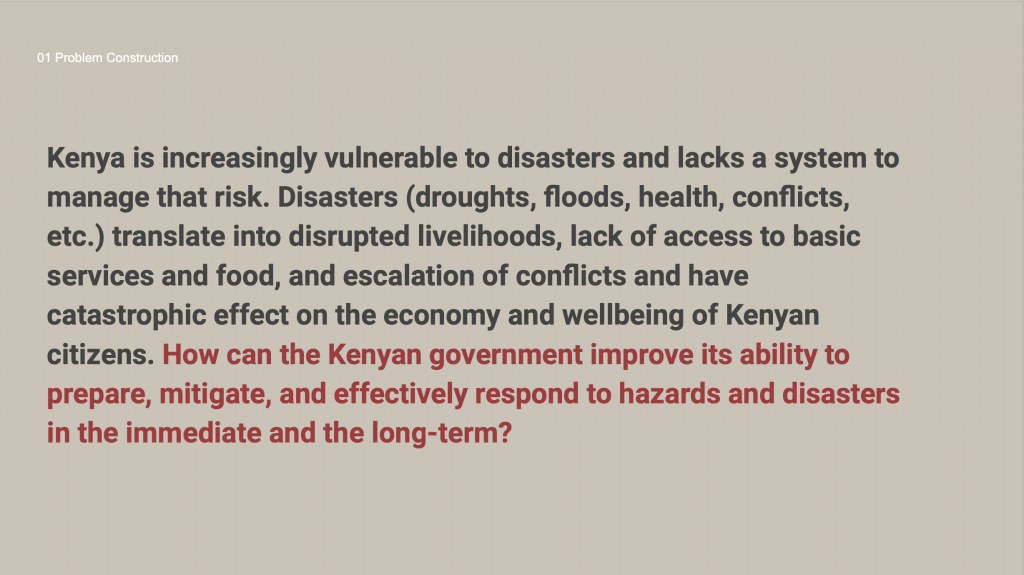
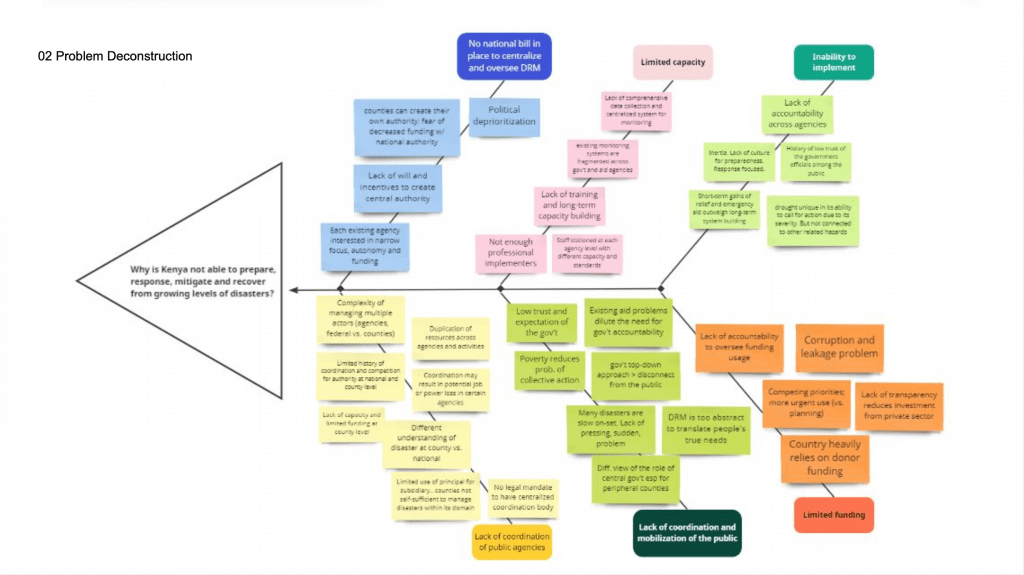
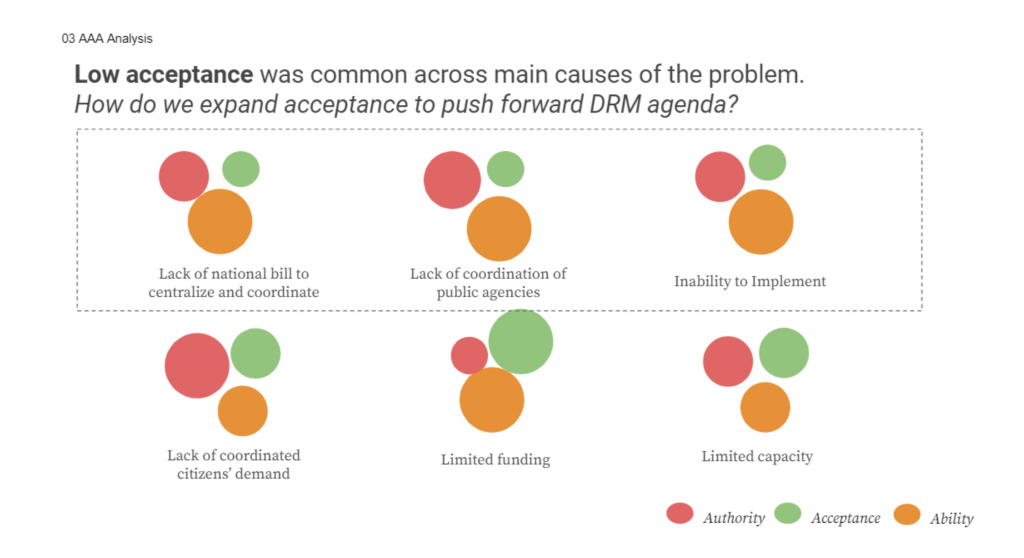
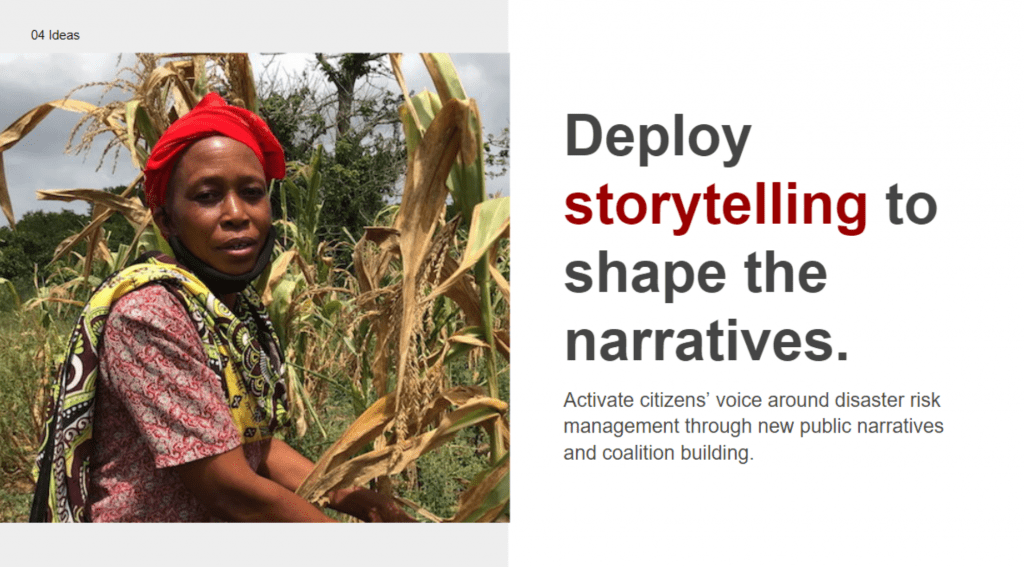
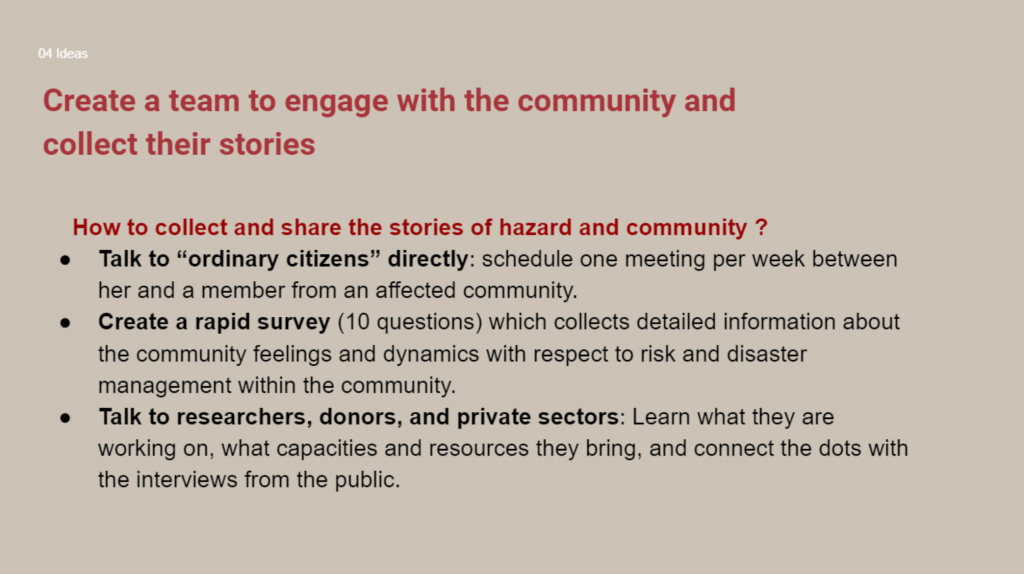
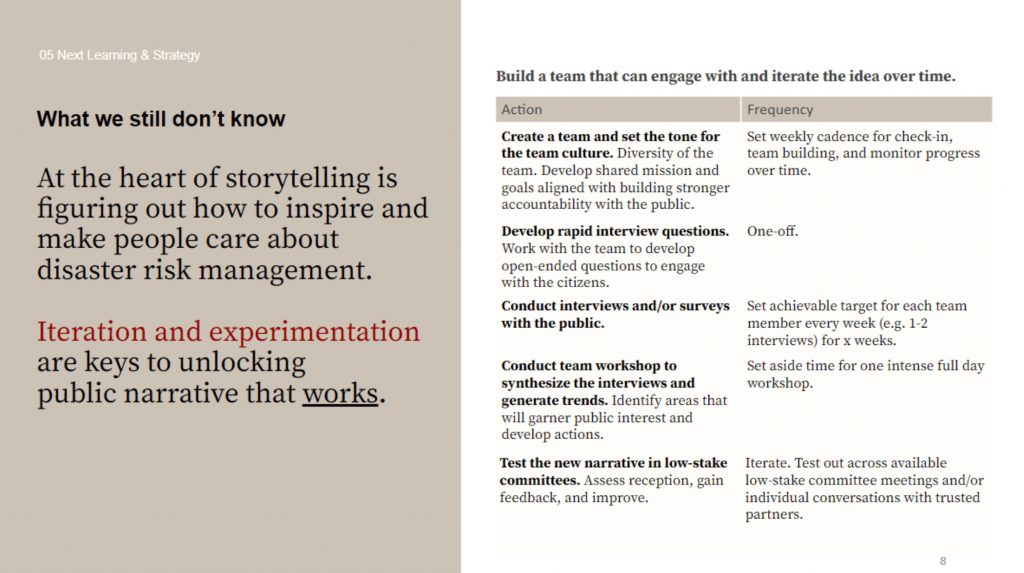
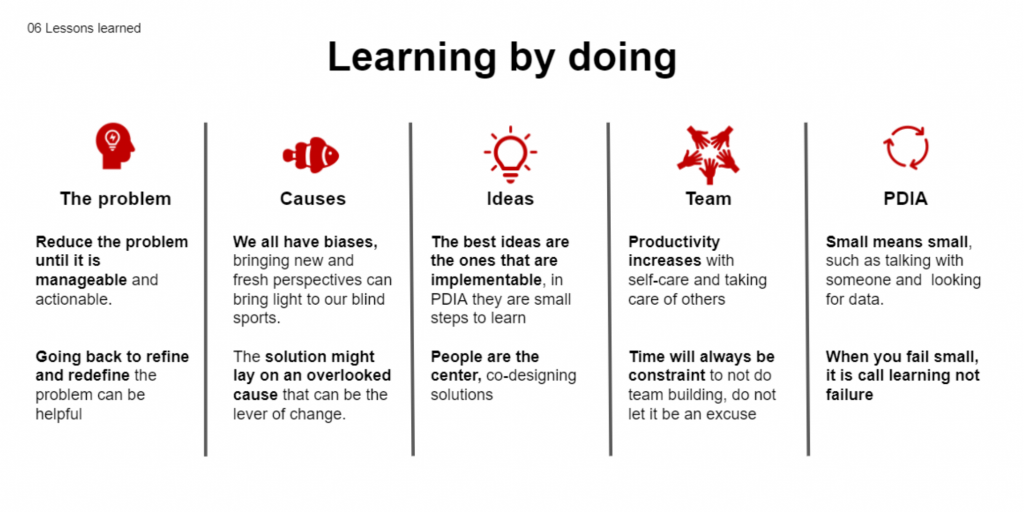
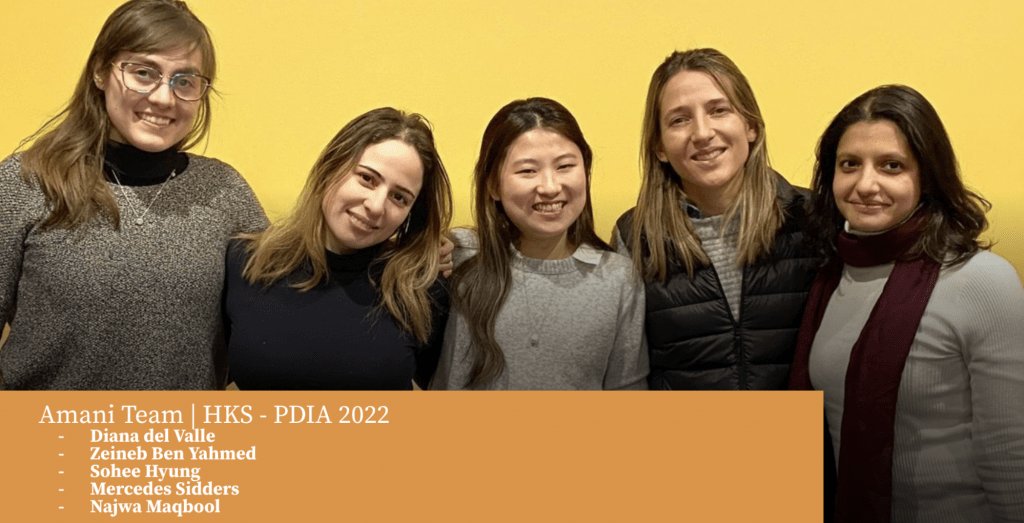
This is a blog series written by students at the Harvard Kennedy School who completed “PDIA in Action: Development Through Facilitated Emergence” (MLD 103) in March 2022. These are their learning journey stories.
